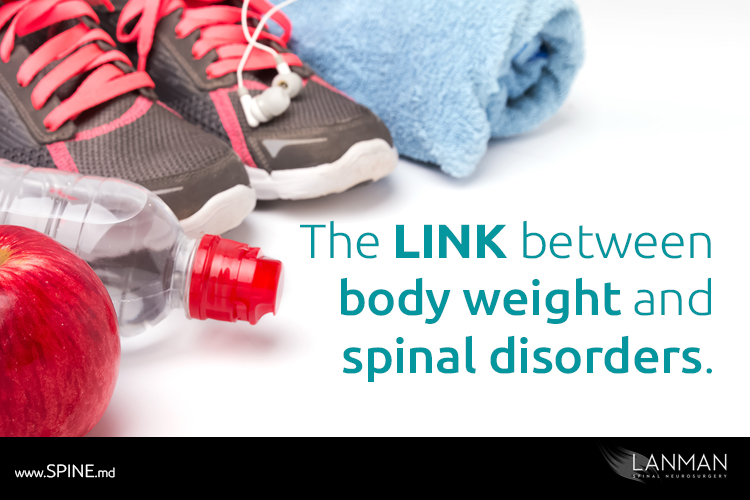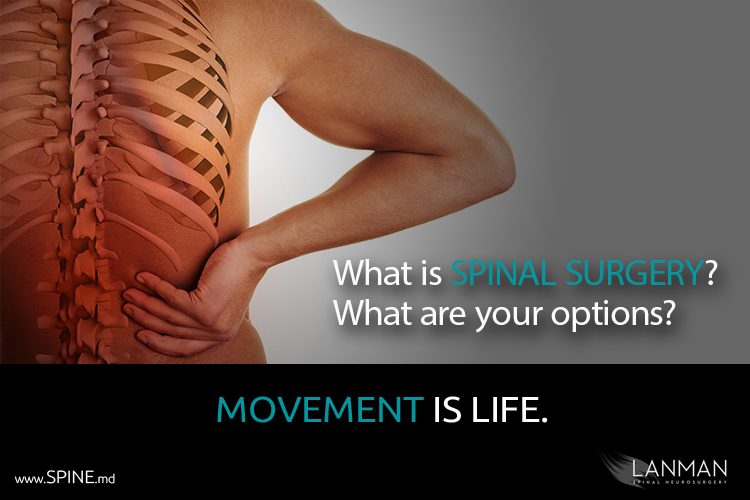Back and neck pain can be controlled with lower body weight and more active lifestyles.
There’s a specific link between your body weight and the pain that you can experience in your neck and back. Think about what is going on structurally with your body: all those bones and muscles.
The bones and cartilage are what gives your body its rigidity and structure. The muscles, ligaments, and tendons are wrapped around the bones to keep it all together. Stability of your entire musculoskeletal system depends a great deal on the way your weight is distributed. We tend to gain a few pounds here and there as we grow older. But it’s the gains that go outside the bounds of what is healthy for our age and height that tosses our whole system off balance.
One direct result of additional body weight is the enormous structural stresses on the whole body. The more weight we gain, the more potential for trouble. Gain too much weight, and we begin to have difficulty with our joints, ligaments, and spinal discs.
If you are predisposed by family history for degenerative disc disease, excess weight definitely accelerates disc degeneration. Add a lifestyle of inactivity and that leaves our bodies open to even more structural problems such as loss of muscle tone and strength.
The surprise for some people is how easy it is to reduce the risk with a daily walk around the block. I often recommend a more aggressive approach with cardio-balance exercises (especially for men) and light weight exercises (especially for women).
You don’t have to be a bodybuilder to stave off back and neck pain. And it takes little time to be proactive about your health.
I have an older couple who have been patients of mine for more than 10 years. Both of them have long-term health problems: arthritis and osteoporosis. One has the added pain of advanced degenerative disc disease which I had to treat with lumbar spinal fusion. Despite their age and health problems, both remain very active.
They take daily walks around their neighborhood with their dogs. On some days, they’ll walk up to four miles. They also keep up a weekly schedule of activities with friends: bowling, golfing, and more walking. And they even swim in their pool about eight laps a day, or nearly one-quarter mile.
I believe their high-level activity has helped stave off more problems with disc failure. They’ve also kept themselves healthy by keeping their body weight under control. Their reward is a high quality of life that they enjoy with friends and family. And yet, neither one of them is an athlete. They’re not what anyone could call fitness fanatics either. They just made a conscious, deliberate decision to be proactive about their wellness.
The good news is that more people are following this example. More people want to pay more attention to what they can do on their own. They could join a gym, but many do not. Some may buy a treadmill or a stationary cycle, but you really don’t need one. They could invest in fad diets if they want, but the best examples among my patients never do.
No one wants an inactive lifestyle thrust upon them. I’ve seen many patients who have been told not to do this or not do that. One man came to me with a case of early degenerative disc disease and was told to stop golfing. Permanently. At age 45.
As it turns out, the strategy for avoiding serious spinal disorders is the same for anyone who wants to be active. When we’re proactive about our weight and activity levels, we can actually prevent disease. We can hold off surgeries. With enough focused exercise and physical therapy, we can even ease away from chronic back and neck pain, at least for a while.
All it takes is a decision: to be greater than better.







